Susun S. Weed
See book keywords and concepts |
 Their anti-cancer, anti-estrogen effects help prevent cancer in all reproductive areas: breasts, ovaries, cervix, uterus, prostate, and testes. isoflavones inhibit the replication of oncogenes by destroying a critical enzyme and have been clinically shown to cause initiated cancer cells to convert to normal cells.34 Women whose diet (and urine) is high in isoflavones have the lowest breast cancer rates: Japanese women's excretion is 117 times greater than American women's. Best Sources: Dried beans, soy products, red clover, sage, garlic, fennel, licorice root. Their anti-cancer, anti-estrogen effects help prevent cancer in all reproductive areas: breasts, ovaries, cervix, uterus, prostate, and testes. isoflavones inhibit the replication of oncogenes by destroying a critical enzyme and have been clinically shown to cause initiated cancer cells to convert to normal cells.34 Women whose diet (and urine) is high in isoflavones have the lowest breast cancer rates: Japanese women's excretion is 117 times greater than American women's. Best Sources: Dried beans, soy products, red clover, sage, garlic, fennel, licorice root. |
Earl L. Mindell, RPh, PhD with Virginia Hopkins, MA
See book keywords and concepts |
| There are soy supplements available that isolate the active ingredients in soy called isoflavones.
Pygeum Africanum
Pygeum Africanum, an evergreen tree from Africa, is an important part of your healthy prostate program. The bark of pygeum helps balance hormone levels and reduce prostate inflammation. Pygeum also improves the quality and quantity of prostate secretions.
Saw Palmetto
Saw palmetto is your most important prostate herb. |
Bryan Hanson, PhD
See book keywords and concepts |
 The glycoside genistin is a good example (see Figure 4.27). Note that compared to the anthocyanidins and flavonoids (and the building blocks of the condensed tannins), the phenyl ring is located on an adjacent carbon.
Lignans20 are molecules assembled from building blocks composed of a benzene ring with a three-carbon chain attached to it. These building blocks are connected, at a minimum, by a bond between the second carbons of the three-carbon chains. Although many lignans have been discovered, few have found clinical use. The glycoside genistin is a good example (see Figure 4.27). Note that compared to the anthocyanidins and flavonoids (and the building blocks of the condensed tannins), the phenyl ring is located on an adjacent carbon.
Lignans20 are molecules assembled from building blocks composed of a benzene ring with a three-carbon chain attached to it. These building blocks are connected, at a minimum, by a bond between the second carbons of the three-carbon chains. Although many lignans have been discovered, few have found clinical use. |
Phyllis A. Balch, CNC
See book keywords and concepts |
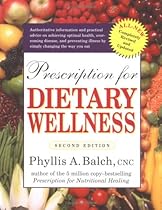 Phytosterols, which protect against colon cancer.
• isoflavones, which lower the risk of breast and ovarian cancer.
• Saponins, which stop cancer cells from multiplying.
Dried legumes are naturally low in fat (except for soybeans and peanuts), calories, and sodium, and are cholesterol-free. A true nutritional bargain, legumes are an inexpensive protein source and have a long shelf life.
Though legumes are high in iron, it is not the type the body absorbs well. This can be remedied by eating vitamin C-rich foods with legumes, which will boost iron absorption. Phytosterols, which protect against colon cancer.
• isoflavones, which lower the risk of breast and ovarian cancer.
• Saponins, which stop cancer cells from multiplying.
Dried legumes are naturally low in fat (except for soybeans and peanuts), calories, and sodium, and are cholesterol-free. A true nutritional bargain, legumes are an inexpensive protein source and have a long shelf life.
Though legumes are high in iron, it is not the type the body absorbs well. This can be remedied by eating vitamin C-rich foods with legumes, which will boost iron absorption. |
Gary Null, Ph.D.
See book keywords and concepts |
 When the isoflavones occupy these receptor sites, inactive estrogen is displaced and eventually eliminated by the liver and colon. Organic sources of isoflavones, which include soybeans, peanuts, lentils, green peas, split peas, and beans, have demonstrated their equality to prescription hormonal supplements without the adverse side effects.
Exercise
As with so many conditions, exercise will make a positive difference with PMS. Research has shown that regular participation in aerobic exercise can prevent negative mood swings, alleviate cramps, reduce fluid retention, and limit sugar cravings. When the isoflavones occupy these receptor sites, inactive estrogen is displaced and eventually eliminated by the liver and colon. Organic sources of isoflavones, which include soybeans, peanuts, lentils, green peas, split peas, and beans, have demonstrated their equality to prescription hormonal supplements without the adverse side effects.
Exercise
As with so many conditions, exercise will make a positive difference with PMS. Research has shown that regular participation in aerobic exercise can prevent negative mood swings, alleviate cramps, reduce fluid retention, and limit sugar cravings. |
David Hoffman, FNIMH, AHG
See book keywords and concepts |
 As discussed in chapters 7 and 9, the isoflavones genistein and daidzein appear to reduce the risk of prostate and breast cancers. Ellagic acid, related more closely to gallates than to proanthocyanidins, is also a potent antioxidant and cancer inhibitor. The citrus flavonoids, hesperidin, quercetin, rutin, and tangeretin, are abundant and effective. Consider some recent research findings:
• Hesperidin raises blood levels of high-density lipoprotein (HDL) and lowers levels of low-density lipoprotein (LDL) and triglycerides. As discussed in chapters 7 and 9, the isoflavones genistein and daidzein appear to reduce the risk of prostate and breast cancers. Ellagic acid, related more closely to gallates than to proanthocyanidins, is also a potent antioxidant and cancer inhibitor. The citrus flavonoids, hesperidin, quercetin, rutin, and tangeretin, are abundant and effective. Consider some recent research findings:
• Hesperidin raises blood levels of high-density lipoprotein (HDL) and lowers levels of low-density lipoprotein (LDL) and triglycerides. |
Steven G. Pratt, M.D. and Kathy Matthews
See book keywords and concepts |
 High in protein, isoflavones, and soluble fiber, they are also high in calories, so you have to limit your consumption to a reasonable amount, say, V* cup a day. (Remember that xk cup soy nuts has 136 calories.) While soy nuts are available in a honey-roasted form as well as various flavored and spiced versions, I recommend that you eat soy nuts with no added ingredients. Be sure to read the label and avoid soy nuts with any added oil and avoid added salt. Soy nuts make a great portable snack. I toss a few on my granola. One-quarter of a cup has about 15 grams of protein. High in protein, isoflavones, and soluble fiber, they are also high in calories, so you have to limit your consumption to a reasonable amount, say, V* cup a day. (Remember that xk cup soy nuts has 136 calories.) While soy nuts are available in a honey-roasted form as well as various flavored and spiced versions, I recommend that you eat soy nuts with no added ingredients. Be sure to read the label and avoid soy nuts with any added oil and avoid added salt. Soy nuts make a great portable snack. I toss a few on my granola. One-quarter of a cup has about 15 grams of protein. |
| The key nutrients of lutein/zeaxan-thin, beta-carotene, alpha-carotene, lycopene, vitamins C and E, folate, polyphenols, glutathione, isoflavones, omega-3 fatty acids, and coenzyme Q10 all help protect your skin from sun damage. This is extremely important because as the ozone layer has decreased, the ultraviolet exposure of all living organisms on earth has increased.
PRINCIPLE FOUR: SUPERFOODS RX ARE SIMPLE;
SUPERFOODS RX ARE POSITIVE
Food is an emotional subject for many people. For some, it's a great, unmitigated pleasure. For many, it's a source of worry and confusion. |
| Soy
SIDEKICKS (in this case, forms of soy): tofu, soymilk, soy nuts, edamame, tempeh, miso
TRY TO EAT: at least 15 grams of soy protein (30 to 50 isoflavones; not from isoflavone-fortified products) per day and divide total daily soy intake into two separate meals or snacks
Soy contains:
¦ Phytoestrogens
Plant-derived omega-3 fatty acids
Vitamin E
Potassium
¦ Folate Magnesium Selenium
¦ Excellent nonmeat protein alternative
One of the recent national morning shows featured a cooking segment about the nutritional benefits of tofu.
"This will be great," said the host of the show. |
| The foods are organized from the most isoflavones to the least. (From Wellness Foods A to Z)
Calories
Fat (g)
Iso
Soybeans, dried, cooked (1 cup)
298
15
95
Soybean sprouts ('A cup)
171
9.4
57
Soy nuts (V4 cup)
194
9.3
55
Tempeh (4 ounces)
226
8.7
50
Soy flour, full fat (V3 cup)
121
5.7
49
Tofu, firm (4 ounces)
164
9.9
28
Soymilk (1 cup)
81
4.7
24
Edamame, cooked (4 ounces)
160
7. |
| I can also report that a very recent, very extensive (January 2003) study in Nutrition Review has confirmed the safety of soy dietary isoflavones in the diet.
There were reports, eventually disproved, that soy led to an increase in the development of senility. Indeed, most populations at the higher end of soy consumption have lower rates of dementia than populations who do not consume soy.
A study in Nutrition and Cancer reports that people who regularly consume as little as one and a half servings of soymilk daily enjoy better cancer protection than those who occasionally consume soy. |
| Moreover, it's not clear if soy isoflavones behave exactly the way they do when they arrive in our bodies via the whole food. My recommendation is to avoid them.
Kitchen Tofu Tip
Many people are unaware that tofu, like milk or meat, is perishable. It won't last forever in the fridge. Pay attention to the expiration date on the package when you buy it (look for the latest date as you would on milk), keep it refrigerated at all times, and change the water in the package daily. Moreover, remember that tofu, like meat, can host unfriendly bacteria like salmonella. |
Janet Zand, LAc, OMD, Allan N. Spreed, MD, CNC, James B. LaValle, RPh, ND
See book keywords and concepts |
 Research suggests that soy isoflavones can help to maintain bone density. They are also good for reducing menopausal discomforts, the risk of certain types of cancer, and, possibly, cardiovascular risk. Take 1,000 milligrams once or twice daily. Ipriflavone, a synthetic supplement based on soy isoflavones, has been reported to show promising results in stopping bone loss as well. The recommended dose is 200 milligrams three times a day.
¦ A natural trace mineral combination is an excellent adjunct to your calcium supplement. Research suggests that soy isoflavones can help to maintain bone density. They are also good for reducing menopausal discomforts, the risk of certain types of cancer, and, possibly, cardiovascular risk. Take 1,000 milligrams once or twice daily. Ipriflavone, a synthetic supplement based on soy isoflavones, has been reported to show promising results in stopping bone loss as well. The recommended dose is 200 milligrams three times a day.
¦ A natural trace mineral combination is an excellent adjunct to your calcium supplement. |
Marcia Zimmerman, C.N.
See book keywords and concepts |
 Adults can benefit from adding soy products to their dietary program because they contain phytochemicals called isoflavones. These substances are believed by scientists to reduce the incidence of breast and prostate cancers. The earlier one starts eating soy products, the better—according to a recent study published in Carcinogenesis. isoflavones compete with estrogen by locking up estrogen receptors in breast tissue before estrogen can attach itself and cause possible harm. Adults can benefit from adding soy products to their dietary program because they contain phytochemicals called isoflavones. These substances are believed by scientists to reduce the incidence of breast and prostate cancers. The earlier one starts eating soy products, the better—according to a recent study published in Carcinogenesis. isoflavones compete with estrogen by locking up estrogen receptors in breast tissue before estrogen can attach itself and cause possible harm. |
Michael Tierra
See book keywords and concepts |
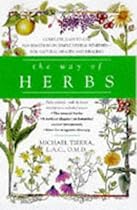 Isoflavones, which are plant estrogens with strong inhibiting effects in hormone-related malignancies, such as prostate, ovarian, cervical, and breast cancers.
The isoflavones are a group of phytochemicals that include genistein. Genistein is an estrogen precursor that binds to receptor sites and either blocks estrogen uptake if there is too much or supplies it if there is too little. This is thought to be why Asian women have a noticeable lack of gynecological problems associated with menopause, fibroids and more than a 45% lower incidence of breast cancer. Isoflavones, which are plant estrogens with strong inhibiting effects in hormone-related malignancies, such as prostate, ovarian, cervical, and breast cancers.
The isoflavones are a group of phytochemicals that include genistein. Genistein is an estrogen precursor that binds to receptor sites and either blocks estrogen uptake if there is too much or supplies it if there is too little. This is thought to be why Asian women have a noticeable lack of gynecological problems associated with menopause, fibroids and more than a 45% lower incidence of breast cancer. |
volker schulz and Rudolf Hansel
See book keywords and concepts |
 In Australia and North America, red clover extracts are available in the form of 500-mg tablets that have a relatively high content (40 mg/tablet) of isoflavones with estrogenlike activity (Kelly et al., 1997). At present it is difficult to reliably evaluate the efficacy of these products. The same applies to the presumed decline in breast cancer risk that has been attributed to the use of phytoestrogens (Dallacker, 1995; Davis, 2001). In Australia and North America, red clover extracts are available in the form of 500-mg tablets that have a relatively high content (40 mg/tablet) of isoflavones with estrogenlike activity (Kelly et al., 1997). At present it is difficult to reliably evaluate the efficacy of these products. The same applies to the presumed decline in breast cancer risk that has been attributed to the use of phytoestrogens (Dallacker, 1995; Davis, 2001). |
Dr. Mary Dan Eades
See book keywords and concepts |
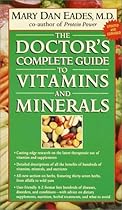 We don't know for certain that isoflavones are effective for everyone. Studies have produced conflicting results, and experts suggest the possibility that isoflavones are effective in some women, but not in all.
Lignans
Almost all cereals and vegetables contain lignans. The highest concentration is found in oil seeds, especially flaxseed. Lignans act like estrogen and have antioxidant properties as well. We don't know for certain that isoflavones are effective for everyone. Studies have produced conflicting results, and experts suggest the possibility that isoflavones are effective in some women, but not in all.
Lignans
Almost all cereals and vegetables contain lignans. The highest concentration is found in oil seeds, especially flaxseed. Lignans act like estrogen and have antioxidant properties as well. |
Gale Maleskey
See book keywords and concepts |
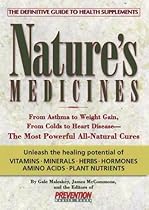 In the meantime, if you want soy's protective effects, you can eat 50 to 60 milligrams of isoflavones a day, he says. The amount of isoflavones in soy foods varies. A half-cup of tofu offers 35 milligrams, one cup of soy milk has 20 to 30 milligrams, and % cup of dry soy protein granules provides 60 milligrams.
If you do opt to take isoflavone supplements, it's still prudent to stay within the 50- to 60-milligram range, Dr, Barnes suggests. "We think that's safe because people have been getting that amount from foods," he says. In the meantime, if you want soy's protective effects, you can eat 50 to 60 milligrams of isoflavones a day, he says. The amount of isoflavones in soy foods varies. A half-cup of tofu offers 35 milligrams, one cup of soy milk has 20 to 30 milligrams, and % cup of dry soy protein granules provides 60 milligrams.
If you do opt to take isoflavone supplements, it's still prudent to stay within the 50- to 60-milligram range, Dr, Barnes suggests. "We think that's safe because people have been getting that amount from foods," he says. |
Brenda Davis and Tom Barnard
See book keywords and concepts |
 Research suggests that isoflavones may provide protection against heart disease, certain forms of cancer, and osteoporosis. Some evidence also indicates that they may preserve cognitive function. While much press has been given to the potential for soy to ameliorate symptoms of menopause, results have been mixed. If it does provide benefit, it appears to be minimal. þflaxseeds. The champions of the nut and seed world, flaxseeds are our richest known source of lignans (potent anticarcinogens), with over 100 times the lignans of most other plant foods. Research suggests that isoflavones may provide protection against heart disease, certain forms of cancer, and osteoporosis. Some evidence also indicates that they may preserve cognitive function. While much press has been given to the potential for soy to ameliorate symptoms of menopause, results have been mixed. If it does provide benefit, it appears to be minimal. þflaxseeds. The champions of the nut and seed world, flaxseeds are our richest known source of lignans (potent anticarcinogens), with over 100 times the lignans of most other plant foods. |
Carol Simontacchi
See book keywords and concepts |
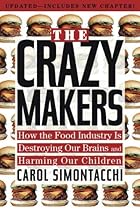 Soy-based formulas are rich in plant chemicals (phytochemicals) called isoflavones. The isoflavones so highly touted as the answer to menopause symptoms or reducing the risk of certain forms of cancer in the adult are actually plant-based estrogens. Infants on soy formula may receive the equivalent amount of estrogen that is found in five to ten birth control pills each day.
This daily shot of female hormones can have devastating effects on little boys. In the first six months, the normal infant male can produce approximately the same amount of testosterone as an adult male. Soy-based formulas are rich in plant chemicals (phytochemicals) called isoflavones. The isoflavones so highly touted as the answer to menopause symptoms or reducing the risk of certain forms of cancer in the adult are actually plant-based estrogens. Infants on soy formula may receive the equivalent amount of estrogen that is found in five to ten birth control pills each day.
This daily shot of female hormones can have devastating effects on little boys. In the first six months, the normal infant male can produce approximately the same amount of testosterone as an adult male. |
| In one UK feeding study involving premenopausal women, 6og of soy protein per day for one month disrupted the menstrual cycle and the effects of isoflavones continued for three months even after cessation of the soy diet. These effects were at dose per body-weight levels at least one order of magnitude lower than levels that soy-based formula-fed infants are exposed to. For infants, high levels of exposure, coupled with frequent and regular feeding throughout the day, results in soy-based formula fed infants having much higher plasma levels of isoflavones than any other population group . . . |
Bradley J. Willcox, D. Craig Willcox, and Makoto Suzuki
See book keywords and concepts |
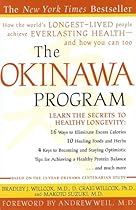 Okinawan tofu saponins, flavonoids
Extra-firm tofu
(mostly isoflavones)
2.
Miso saponins, flavonoids
White miso (low-sodium)
(mosdy isoflavones)
3-
Dried bonito omega-3 fat
Bonito broth powder
4-
Carrots and carrot tops carotenoids, flavonoids
Carrots and carrot leaves
5-
Sanpin tea catechin (a flavonoid)
Jasmine tea
6.
Goya (bitter melon) mormordin protein
Bitter melon or zucchini
7-
Konbu (dried kelp) lignans
Dried kelp
8.
Cabbage indoles
Cabbage
9-
Nori (dry seaweed) lignans
Seaweed sheets
10.
Onions flavonoids, allylic
Onions sulfides
11. Okinawan tofu saponins, flavonoids
Extra-firm tofu
(mostly isoflavones)
2.
Miso saponins, flavonoids
White miso (low-sodium)
(mosdy isoflavones)
3-
Dried bonito omega-3 fat
Bonito broth powder
4-
Carrots and carrot tops carotenoids, flavonoids
Carrots and carrot leaves
5-
Sanpin tea catechin (a flavonoid)
Jasmine tea
6.
Goya (bitter melon) mormordin protein
Bitter melon or zucchini
7-
Konbu (dried kelp) lignans
Dried kelp
8.
Cabbage indoles
Cabbage
9-
Nori (dry seaweed) lignans
Seaweed sheets
10.
Onions flavonoids, allylic
Onions sulfides
11. |
James A. Duke, Ph.D.
See book keywords and concepts |
 One cup of soybeans (about 200 grams) provides about 300 milligrams of the most important class of phytoestrogens, isoflavones. That amount could provide about the equivalent of one tablet of Premarin, the commonly prescribed synthetic hormone used in ERT.
Studies show that women who regularly eat soy foods have few hot flashes, and they have more cells in their vaginal linings. These extra cells offset the vaginal dryness and irritation that are so common in postmenopausal women.
Soybeans are not the only beans high in isoflavones. One cup of soybeans (about 200 grams) provides about 300 milligrams of the most important class of phytoestrogens, isoflavones. That amount could provide about the equivalent of one tablet of Premarin, the commonly prescribed synthetic hormone used in ERT.
Studies show that women who regularly eat soy foods have few hot flashes, and they have more cells in their vaginal linings. These extra cells offset the vaginal dryness and irritation that are so common in postmenopausal women.
Soybeans are not the only beans high in isoflavones. |
Gary Null
See book keywords and concepts |
| Include soy (for the isoflavones) and aloe vera in your food selections. Helpful herbs include garlic, St. John's wort, turmeric, echinacea, bee propolis, astragalus, skullcap, burdock, red clover, milk thistle, and kom-bucha. As we've mentioned before, you do not have to take all of these, and you most likely should not. They are listed here to show all that benefit the body, but your healthcare practitioner will work with you to determine your personal regimen. |
Larry Trivieri, Jr.
See book keywords and concepts |
 Recent work suggests that the isoflavones [phytoestrogens] in soybeans also have a direct benefit on bone health, possibly by inhibiting bone resorption," Dr. Ojeda says.36 Phytoestrogens are so named because they can act like hormonal estrogen in the body, attaching to estrogen receptor sites and serving to restrain bone loss. In preliminary studies, synthetic isoflavones, such as ipri-flavone, have also shown effectiveness in slowing bone loss.37
Some health practitioners also recommend calcium supplements. Michael T. Murray, N. Recent work suggests that the isoflavones [phytoestrogens] in soybeans also have a direct benefit on bone health, possibly by inhibiting bone resorption," Dr. Ojeda says.36 Phytoestrogens are so named because they can act like hormonal estrogen in the body, attaching to estrogen receptor sites and serving to restrain bone loss. In preliminary studies, synthetic isoflavones, such as ipri-flavone, have also shown effectiveness in slowing bone loss.37
Some health practitioners also recommend calcium supplements. Michael T. Murray, N. |
volker schulz and Rudolf Hansel
See book keywords and concepts |
 Nestel PJ, Pomeroy S, Kay S, Komesaroff P, Behrsing J, Camron JD, West L (1999) isoflavones from red clover improve systemic arterial compliance but not plasma lipids in menopausal women. J Clin End Met 84: 895-899.
Notelovitz M (1989) Estrogen replacement therapy indications, contraindications, and agent selection. Am J Ostet Gynecol 161: 8-17.
Schellenberg R for the study group (2001) Treatment for the premenstrual syndrome with agnus castus fruit extract: prospective, randomised, placebo controlled study. BMJ 322:134-7. Nestel PJ, Pomeroy S, Kay S, Komesaroff P, Behrsing J, Camron JD, West L (1999) isoflavones from red clover improve systemic arterial compliance but not plasma lipids in menopausal women. J Clin End Met 84: 895-899.
Notelovitz M (1989) Estrogen replacement therapy indications, contraindications, and agent selection. Am J Ostet Gynecol 161: 8-17.
Schellenberg R for the study group (2001) Treatment for the premenstrual syndrome with agnus castus fruit extract: prospective, randomised, placebo controlled study. BMJ 322:134-7. |
Dr. Mary Dan Eades
See book keywords and concepts |
 Red clover contains 1 to 2.5% isoflavones. isoflavones are )hytoestrogens; they have mild estrogenic activity. Some clovers ire so estrogenic that they have been known to cause spontaneous bortion in cattle that overgraze on them. But for humans, this herb an help balance hormones and is used to treat the symptoms of lenopause.
• Red clover is good for bacterial infections, HIV and AIDS, in-amed lungs, and inflammatory bowel disorders.
Contraindications—None known.
-St. Red clover contains 1 to 2.5% isoflavones. isoflavones are )hytoestrogens; they have mild estrogenic activity. Some clovers ire so estrogenic that they have been known to cause spontaneous bortion in cattle that overgraze on them. But for humans, this herb an help balance hormones and is used to treat the symptoms of lenopause.
• Red clover is good for bacterial infections, HIV and AIDS, in-amed lungs, and inflammatory bowel disorders.
Contraindications—None known.
-St. |
volker schulz and Rudolf Hansel
See book keywords and concepts |
 However, a recent comprehensive review from the British government has confirmed the general safety of dietary isoflavones and other phytoestrogens sold as foods and dietary supplements (Committee on Toxicity, 2003). Another critical review focusing on the efficacy of 29 complementary and alternative treatments used in the U.S. However, a recent comprehensive review from the British government has confirmed the general safety of dietary isoflavones and other phytoestrogens sold as foods and dietary supplements (Committee on Toxicity, 2003). Another critical review focusing on the efficacy of 29 complementary and alternative treatments used in the U.S. |
Rebecca Wood
See book keywords and concepts |
 Health Benefits isoflavones, a type of plant estrogen usually occurring in soybeans, are credited with slowing osteoporosis, relieving some side effects of menopause, and alleviating many forms of cancer, including breast and prostate cancer, as well as kidney disease and complications from diabetes. Although other plants contain isoflavones, none contain as rich a supply as soybeans do. In addition, soybeans dramatically lower the undesirable low-density lipoprotein blood cholesterol while raising the desirable high-density lipoprotein level. Health Benefits isoflavones, a type of plant estrogen usually occurring in soybeans, are credited with slowing osteoporosis, relieving some side effects of menopause, and alleviating many forms of cancer, including breast and prostate cancer, as well as kidney disease and complications from diabetes. Although other plants contain isoflavones, none contain as rich a supply as soybeans do. In addition, soybeans dramatically lower the undesirable low-density lipoprotein blood cholesterol while raising the desirable high-density lipoprotein level. |












